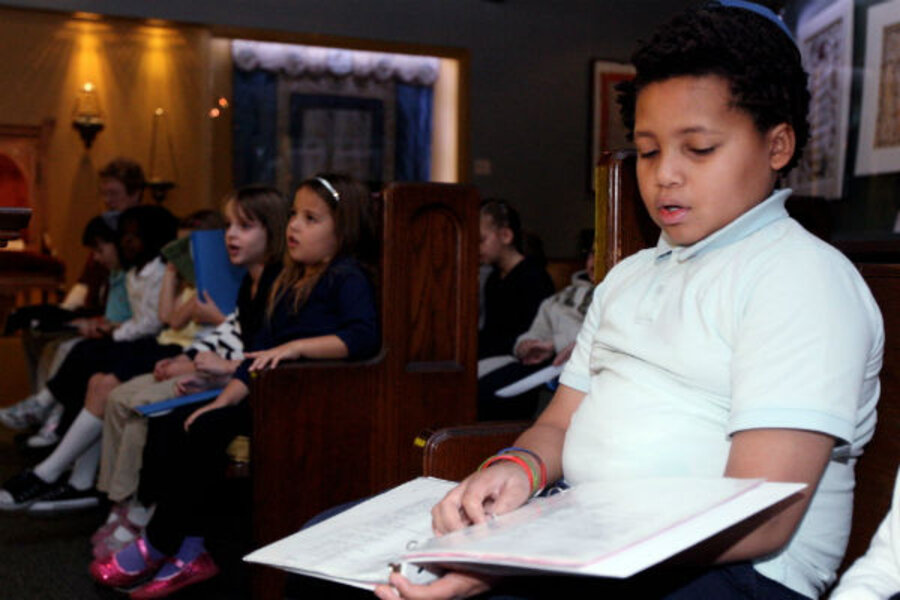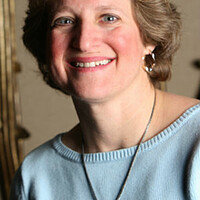Raised with rabbis: One family's journey to share their faith
Loading...
| Lexington, MA
Our temple cantor strummed a few chords, and before she could open her mouth, my 4-year-old son Simon did. “Bim bam,” he sang out.
The cantor smiled, touched rather than upset that my son for a moment had become song leader as we started walking into the sanctuary for the recent Tot Shabbat service. She then took over. “Shabbat shalom,” she sang, and Simon along with the cantor’s 6-year-old daughter, shouted, “Hey!” and clapped in unison.
My son treats our temple like a second home. He hugs the rabbis and the cantor. He exchanges high fives with other parents and children. He seems as comfortable in the children’s service as he is in the adult services. Seeing my son embrace his faith so early in life is beautiful and at times, astonishing. Both my husband and I grew up largely disconnected from our faith. We didn’t set out to make Judaism such an integral part of our son’s early childhood. It just happened.
By the time Pavlik and I married, both of us had become closer to Judaism than we were as children. I celebrated my adult bat mitzvah at age 41 in 2006 – months before my wedding and two years before Simon was born. Pavlik, after college, joined a chavurah, a group of Jews who regularly got together to mark Shabbat and other Jewish holidays. He studied conversational Hebrew for a year. Before Simon was born, my husband and I sang in our temple chorus. Months after Simon’s birth, we brought him to chorus rehearsals so often that our infant was dubbed the “chorus baby.” He alternately cooed or slept at rehearsals.
Several times a year, particularly during the summer when evening services are earlier, we brought Simon as a baby to services. He was often the only baby or the only toddler. If he cried, we took him out. Around six months old, Simon had one of his biggest early Jewish experiences. It’s a memory he won’t remember but I always will. I took him out to change his diaper and walked back in as the rabbi was asking children to to open the doors of the ark – a beautifully carved wooden structure that houses our temple’s three Torah scrolls. Simon was the only actual child at that service.
I tried to slip into a seat, but the rabbi called out, “Linda, bring Simon up.” My face reddened, but I complied. Simon snuggled in my arms. I opened one of the doors because he was too little to help, but he absorbed it. The rabbi and cantor sang the Aleinu and my son’s eyes widened and he smiled. A little more than a year later, at age 2, Simon insisted on walking up himself to open the ark doors, drawing chuckles from congregants.
At home, on evenings we do not attend services, we light the candles and say the blessing over the bread and Simon sings along. Sometimes, he wants to lead.
My childhood memories of temples are not warm and fuzzy. I never would have hugged a rabbi. I found clergy boring and didactic and saw no purpose for religion or ritual. My family did not go to services. My father was resistant to ritual at home. My mother had more love for Judaism but heeded my father’s wishes on many Jewish-related things. We were not a family that went to temple for anything but religious instruction on Sunday mornings.
The Sunday school-only model of the family I grew up in remains common, my temple rabbi says. Few families, sadly, bring their children to temple for regular events from birth on, our rabbi says. We did not set out with a grand plan for our son’s introduction to Judaism. By the time Simon was born, my husband and I enjoyed going to services regularly. It has helped, too, that our temple had an active schedule of events for families of young children. We knew we wanted Simon exposed to his faith. We hoped he would sense our joy and develop his own love for Judaism. So far, our hope has come true.
The Christian Science Monitor has assembled a diverse group of the best family and parenting bloggers out there. Our contributing and guest bloggers are not employed or directed by the Monitor, and the views expressed are the bloggers' own, as is responsibility for the content of their blogs. Linda Wertheimer blogs at Jewish Muse.






